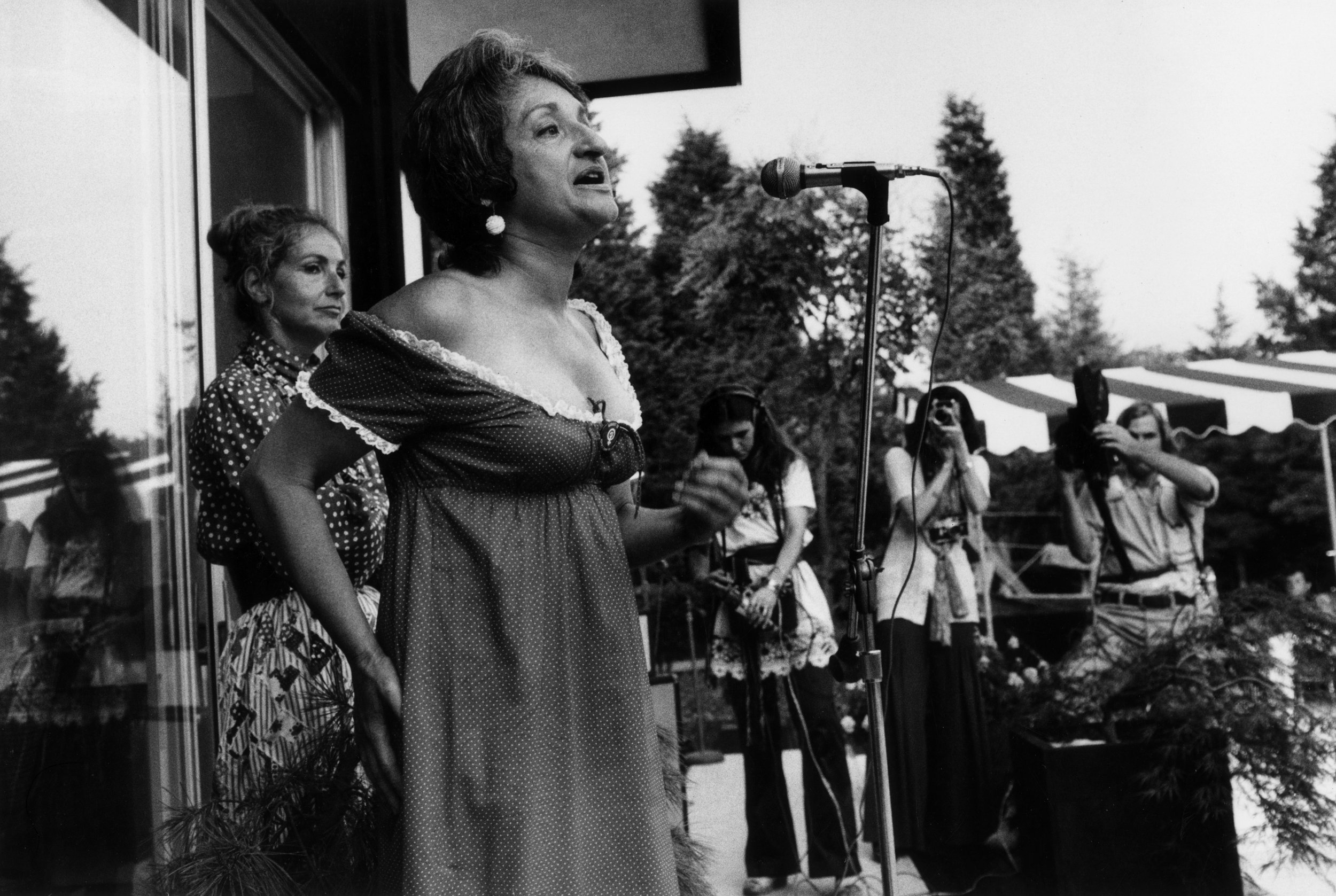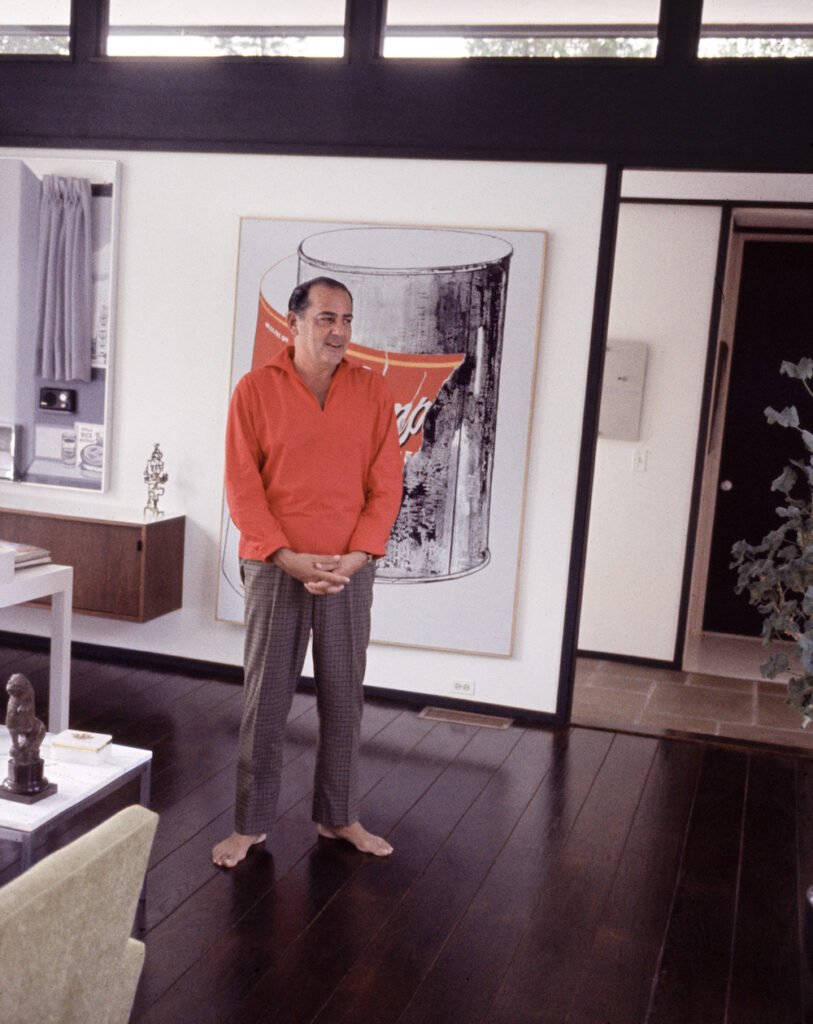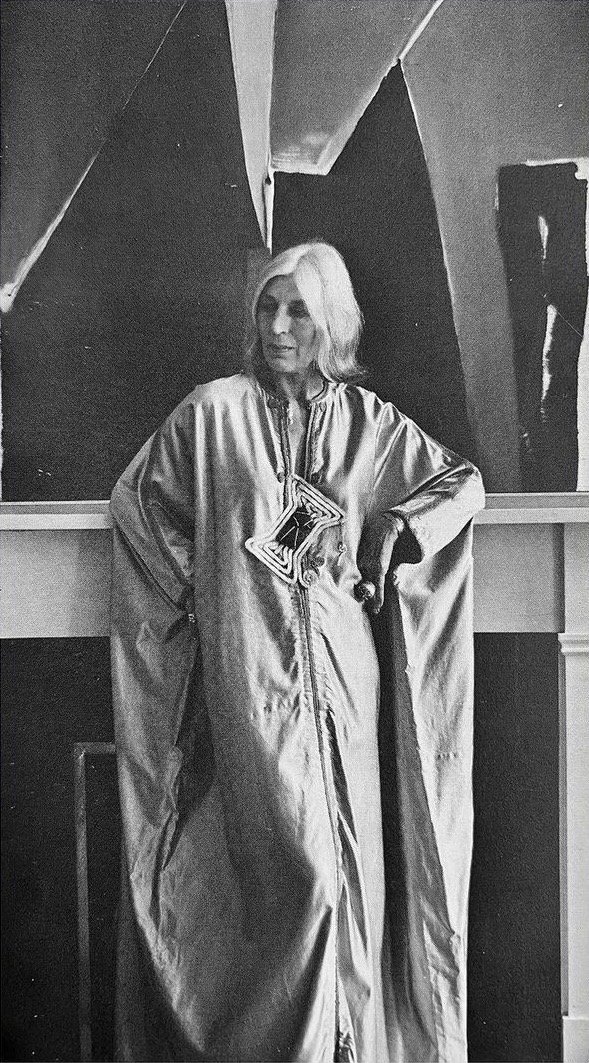ORIGINAL HOUSE
The architectural gem that is Onna House was designed in 1962 by renowned architect Paul Lester Wiener.
Lisa Perry purchased and restored the home in 2021.
A pre-renovation photo of the house.
THE DISCOVERY
Lisa Perry, in search of a studio space of her own for creative work, came across the Onna House property for sale on the Instagram account of @thecreativesagent. The Creatives Agent uses his platform to find thoughtful buyers for midcentury modern properties in danger of being demolished. Lisa was immediately drawn to the house’s modernist structure - the crisp details so reminiscent of her own childhood home in the suburbs of Chicago that she had chills on her first visit. Digging into the history of this unique property, Lisa discovered that the original owners were none other than Robert and Ethel Scull, famous art collectors with a deep affinity for Pop art, much like Lisa herself.
Lisa Perry’s childhood home, outside Chicago.
Lisa Perry’s childhood home, outside Chicago.
THE SCULLS
Robert was dubbed as “the busiest, the most powerful, and very probably the most ambitious [art] collector around” by The New Yorker in a profile published in 1966. Known the “Taxi Tycoon”, Scull inherited a share of a lucrative taxi business from his wife Ethel’s father and grew it to a fleet of 130 cabs. He used the wealth from his taxi fleet to collect art. In the early years, Scull concentrated on Abstract Expressionism and collected works by de Kooning, Kline, Rothko and Newman. In 1961, he was introduced to Pop Art by aficionado Richard Bellamy who took Scull on visits to lofts of unknown artists in unusual parts of town. He introduced Scull to Rosenquist, Morris, Chamberlain, di Suvero, Poons among others, and Scull became the first collector to purchase their work.
He evolved from being a collector to a patron and financially supported artists in need. In return, Scull received first dibs on whatever the artist produced. By 1965, Scull was fully committed to his patronage and auctioned twelve of his most important Abstract Expressionist pieces for $165,000. He announced that the earnings would go to financing young and unknown artists through the Robert and Ethel Scull Foundation, established in 1965. The foundation’s primary goal was to support and encourage young artists by purchasing their art, paying for rent and other living expenses. As Mr. Scull built his reputation as a major player in the art scene, Mrs. Scull was being sought out by gossip writers and was regularly covered in the fashion pages. The couple reached celebrity status as they amassed a vast collection of Pop art that included numerous works by Andy Warhol, Roy Lichtenstein, Frank Stella, James Rosenquist, Jasper Johns, Tom Wesselman and Claes Oldenburg to name a few. In 1973, Robert Scull decided to sell a large number of pieces from his collection at an auction at Sotheby’s titled A Selection of Fifty Works from the Collection of Robert C Scull. Many were enraged and accused the Sculls for the exploitation of artists. A Rauschenberg went for $85,000 which Scull purchased for $900 - a perfect example highlighting the disparity between the artist’s earnings and the collector’s profits. The 1973 auction brought in $2.2 million in total and is infamously known to have shaped today’s contemporary art market.
THE SCULLS IN EAST HAMPTON
In 1961, Scull bought an acre and a half of land in East Hampton, Long Island. A year later, he commissioned noted architect Paul Lester Wiener to design the home. It was here that Robert Scull famously asked Andy Warhol to paint a portrait of his wife Ethel as a gift for her 42nd birthday - Warhol’s first commission and a key moment in his career. The request was to depict Ethel in the same style as Marilyn Diptych (1962). Warhol completed Ethel Scull 36 times in 1963 and received hundreds of subsequent celebrity portrait commissions. Today, the piece is jointly owned by the Whitney Museum of American Art and The Metropolitan Museum of Art
By the mid 60’s, East Hampton had already been established as the official summer residence of the high powers in the exploding art scene. Conveniently within party-going distance of several dozen art-world luminaries, Robert and Ethel had a jam packed social calendar - attending parties at the Barge, a floating discotheque in Quogue, beach-party picnics, and events in Southampton. Prescient of the Onna House era, and pictured below, the Sculls also hosted countless events at their East Hampton retreat such as the Women’s Strike for Equality benefit in 1970, hosted by Ethel Scull, Gloria Steinem, Gloria Vanderbilt, Edith De Rham and Betty Friedan, founder of the National Organization of Women.
Gloria Steinem
Betty Friedan
Ethel Scull
Robert Scull
THE ARCHITECT
Famed architect and city planner, Paul Lester Wiener was educated at the Royal Academy of Berlin. He is known for designing the Contempora House in New City, Rockland County, NY and for collaborating with Le Corbusier. Recognized for his concepts of clean basic lines and functional form, Wiener was hired by Robert Scull to design the East Hampton home in 1962. The house was originally intended as a bungalow but took shape as a “dramatic glass-walled villa built out in wings to form a sculpture atrium, and landscaped with enough sensitive trees and flowers to keep a gardener from the neighboring village of Springs fully employed.”, as described by The New Yorker’s Jane Kramer. A year later, Wiener designed the Amagansett home of famed former Vogue editor Beatrice “Babs” Simpson. He passed away in 1967 and was laid to rest at the Green River Cemetery in East Hampton.
Paul Lester Wiener in his Hamptons studio
Ingeborg ten Haeff
Paul Lester Weiner married German-American painter Ingeborg ten Haeff and commissioned his colleague’s close friend, Alexander Calder, to create a brooch for a wedding present for his new bride. Recently, Onna House featured Ingeborg’s artwork.










